Plants of the Castlemaine district
Thornapples - introduced (*Datura species)
Family: Solanaceae (Potato family). Natives of America.
Occurrence: Scattered and seldom abundant in Central Victoria.
Identification:
- they are small to medium shrub-like plants
- the fruit are ovate and are covered with spines
- the flowers are long and trumpet shaped
- the leaves are broad and often have lobed or wavy edges.
Several species have been recorded for Central Victoria. Most are noxious weeds.
Common Thornapple (*Datura stramonium).
A noxious weed (regionally Controlled in central Victoria).- the petals to 10 cm long
- the fruit has about 100 spines which are less than 2 cm long
- the leaves often toothed
- the stems are smooth or slightly hairy.
Hairy Thornapple (*Datura wrightii).
- the petals are 15-20 cm long
- the fruit have numerous spines 3-5 mm long
- the leaves not lobed or only slightly lobed
- the stems are hairy with backward-pointing hairs.
It is a noxious weed and listed Regionally Controlled in central Victoria.
Long-spine Thornapple (*Datura ferox).
A noxious weed.- The petals are 5-6 cm long
- the fruit have 40-60 stout spines of variable length, with the longest at the end of the fruit
- the leaves are toothed or wavy-edged
- the branches are smooth or with simple (non-glandular) hairs.
Recurved Thornapple (*Datura inoxia).
- the petals are 15-20 cm long
- the fruit has numerous spines to 10 cm long
- the leaves are untoothed
- its stems are woolly with glandular hairs
It is a noxious weed and listed Regionally Controlled in central Victoria.
Photos: 1. Dried specimen of Hairy Thornapple (D. wrightii). Cairn Curran, Baringhup.
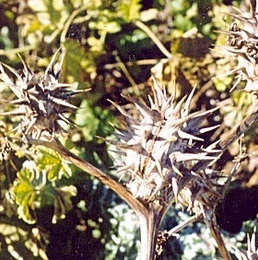
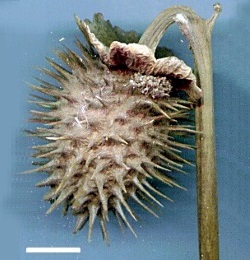
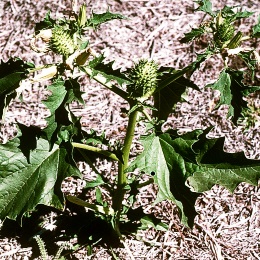
2. Long-spine Thornapple (D ferox) Hay wetlands. 3-6: Common Thornapple (D. stramonium). 3 Lake Benamee. 4: Epsom.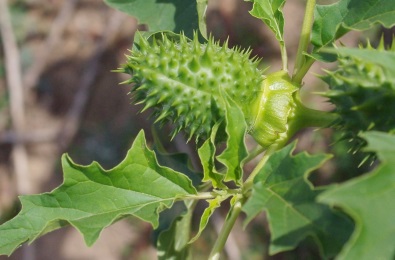
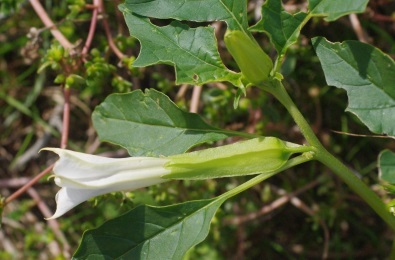
5-6. Common Thornapple, Epsom.



2. Long-spine Thornapple (D ferox) Hay wetlands. 3-6: Common Thornapple (D. stramonium). 3 Lake Benamee. 4: Epsom.


5-6. Common Thornapple, Epsom.